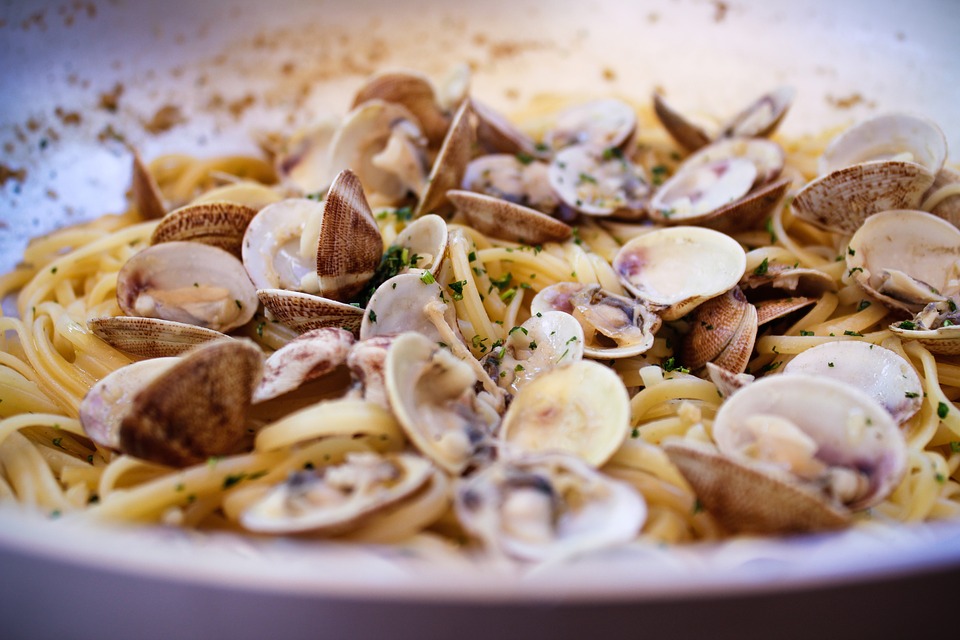
Traditional bivalves were mainly consumed in live form in the producing countries. However, in recent years there has been a trend for more international trade in bivalves. This is especially true for frozen bivalve products. At present, demand for bivalves is high and prices are rising quite fast.
Mussels
China is the main mussel producer in the world with about 600 000 tonnes, but most of this production is to feed other fishery products, such as the culture of blue crab. Spain is the main producer of mussels for human consumption, producing 250 000 tonnes of mussels per year and with an increasing trend. In recent years, Spanish producers managed to get a certification of Protected Denomination of Origin from the EU28, which will help to promote its image in the EU28 market.
Northern European consumers pay about twice as much as consumers in Southern Europe. This might be due to simpler and shorter value chains in the Southern part of the continent. But mussels are expected to increase their presence in new markets, such as the Russian Federation and the United States of America. Prices are likely to go up in line with additional demand.
Australia is expanding its blue mussel culturing industry, with the goal to sell to the EU28 and the United States of America during periods of the year when the production there is low, taking advantage of the different climatic season in the Southern hemisphere. Chilean exports of mussels were stable at 44 000 tonnes during the first six months of the year, when compared with the same period of last year. Their presence in the Spanish market is declining, even though Spain continues to be the main client for Chilean frozen mussel exports. This product is mainly going as raw material into the Spanish canning industry.
Spanish imports of mussels went down in 2019, probably in light of the good domestic production. In the first six months of the year only 9 000 tonnes were imported, compared with 13 000 tonnes and 10 000 tonnes in the same period of 2017 and 2018, respectively. France reported steady imports during 2019, at 31 000 tonnes, with Spain and the Netherlands as main suppliers.
Scallops
The European Union (Member Organization) has re-approved China for scallop exports to the EU28, from which it had been banned since 2007. Peruvian scallop production recovered completely after the contraction in 2017 and 2018, when production dropped by 80 percent due to environmental problems. In the near future, Peru will target mainly the US market, as Chinese exports there will suffer in the coming months from US tariffs on seafood including scallops from China. The EU28 market for Peruvian scallops is expected to recover very slowly. French imports during the first half of the year reached 1 600 tonnes, four times the corresponding 2018 amount for the same period.
Total world scallop exports declined from 92 800 tonnes in January–June 2018 to 73 700 tonnes in the same period of 2019. This was mainly due to reduced imports into China.
Oysters
In the first half of the year, oyster trade (both imports and exports at world level) was stable at about 32 000 tonnes. The Republic of Korea and France are the main exporting countries, while the United States of America and Japan are the main importing countries. The Republic of Korea targets mainly the Japanese market, while France delivers to neighbouring EU28 countries and to China. During the first months of the year consumption isn’t strong , while the closing months are the main sales period, cumulating in the Christmas festivities.
Clams
In the first six months of the year, clam exports increased slightly to reach 141 000 tonnes. Japan and the Republic of Korea are the main importers, while China is the dominating exporter. This pattern has been stable over the years.
Outlook
Mussel production in Spain is expected to break records in 2019, probably almost reaching the 300 000 tonnes mark. Prices of mussels are stable, but some increase in view of good demand is likely for the end of the year and beginning of 2020.
The extremely hot summer during June 2019 in France has had an impact on oyster mortality there. The outlook for oyster production for 2020 is bleak, with lower production and probably higher prices. Christmas is a main consumption period for oysters, and soon prices will start moving upwards.
The change in EU28 policy with regard to Chinese scallops will favour trade. It is likely that China will increase its scallop exports to the EU28 significantly, which means Chinese products will compete with those from other scallop suppliers. At the same time, the good scallop season in Peru expected for 2020 will find its way back to the traditional markets, mainly to France and, to a lesser extent, Italy. Increased production of bivalves will continue fostered by good demand in all markets. Clam prices in Southern Europe are likely to continue sky-high, as demand is surpassing supply. Some price normalization is expected towards the beginning of 2020, when sales will start to slow down.


![INFOSAMAK International Magazine 4/2021 is available!! [November 2021]](/english/admin_images/Sans titre11.png)